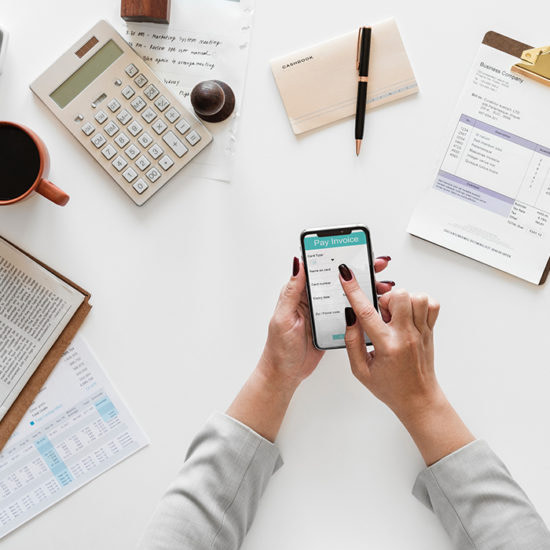5 tips for managing your first client relationships

New to running your own business? Here are some guidelines to help you get your client relationships off to a great start.
If you haven’t dealt directly with clients before and you’re not naturally a silver-tongued Don Draper type, you might be wondering where to begin. But working with clients isn’t really that different from any other business relationship. Essentially, you both have goals and you just need to plan out the best way to meet them. Here are five tips to help you do just that.

1. Use a contract
It may feel a bit heavy-handed, but putting a contract in place is a great way to set up a relationship and give yourself some extra peace of mind. It doesn’t need to be super-complicated or long, and you almost certainly don’t need a lawyer. Many freelancers choose an informal style of contract, such as a letter of agreement, which sets out who has agreed to do what, and when.
A statement of work is another kind of contract which is popular with design and creative professionals. It goes into a little bit more detail about how you’ll tackle things like amends, payments and intellectual property rights.
Set these documents up in advance if you can, using a boilerplate version that you can tweak and amend for new jobs as they arise. If you’ve got some business branding in place, e.g. for your Business Cards or Letterheads, you can include it on the document for that extra-professional feel.

2. Keep them posted
Keep your client in the loop with regular communication. They probably don’t need a daily bulletin (unless they’ve specifically asked), but it’s a good idea to proactively let them know every week or so:
- what you are doing
- what you plan to do next
- anything you’re going to need from them, such as feedback or source material
There are a couple of reasons for this. One is that it saves your client the effort of checking in with you and keeping things moving along. Another is that it prompts them to tell you about any changes or plans that could affect your work. It could even lead to them thinking of you for additional projects, as you’ll be at the front of their mind.
If you need something from your client or you’re waiting for a reply, send them a friendly chase-up email or pick up the phone. If they’re busy and have a lot of things flying around, this can be really helpful. (Don’t chase them too often of course, but a little bit is fine.)
3. Plan for payment schedules
One area where freelancing differs dramatically from salaried work is how often you get paid. After you submit an invoice for work you’ve done, you’ll need to wait for it to be paid. How long this takes varies from client to client.
For some companies, it’s typical to pay invoices within 30 days, and for others it’s 60. Some don’t have a fixed policy.
Your client’s process is likely to be the same for all its suppliers, whether they’re one-person companies or major businesses. So it’s a good idea to always ask a new client what their payment terms are. Once you know, you can plan ahead and make sure you’re not left out of pocket.
4. Don’t be afraid to talk about money
Negotiating prices, providing quotes and making sure you’re paid fairly for the work you do is a fundamental part of being self-employed. It can also be one of the most daunting areas for first-time freelancers, but it becomes much easier once you’ve made a few key decisions.
One of the first things to do is establish your rates, whether they’re hourly or by the day. Compare notes with other freelancers in your field if possible, or check out sites like Upwork, which shows rates for many freelancers in a range of fields, or freelancer.com, which gives you an idea what companies are prepared to pay for specific jobs. Once you’ve decided on your rates, you can use them to price your work and negotiate with your clients.
It’s also a good idea to think about whether you want to work on a project or a time-and-materials basis.
- With project-based costs, you charge a set amount which is agreed at the outset. This is a good way for clients to make sure they’re working within their budgets. But it needs to be accompanied by a clear statement of work to make sure you don’t get asked to do extras that aren’t covered by your original costs.
- Time and materials means you keep track of the work you’ve done and bill the client on a regular basis until work is complete. This kind of billing is good for projects that change as they go along, or for work with an unpredictable schedule. It requires a bit of extra admin in tracking your hours, but it means you won’t be out of pocket if there’s more work than expected
5. Keep in touch once the job is done
Everything’s gone well, the project’s complete and your client’s happy with what you’ve done. If you’ve done a good job, they may well want to hire you again. But the chances are they’ll move on to new things quickly, and won’t always remember you unless you make the effort to stay in touch.
Keep things light and low-key, dropping them a line every couple of months to stay in touch. If you’ve found a relevant news story or link to share with them, you can make this the subject of your message, and sign off with a reminder that you’re around and available for work.
You can also use the mail to stay in contact – why not send them some Postcards or Flyers showcasing your latest work, or a product sample wrapped and finished with a Sticker?
Keep in touch
Get design inspiration, business tips and special offers straight to your inbox with our MOOsletter, out every two weeks.






